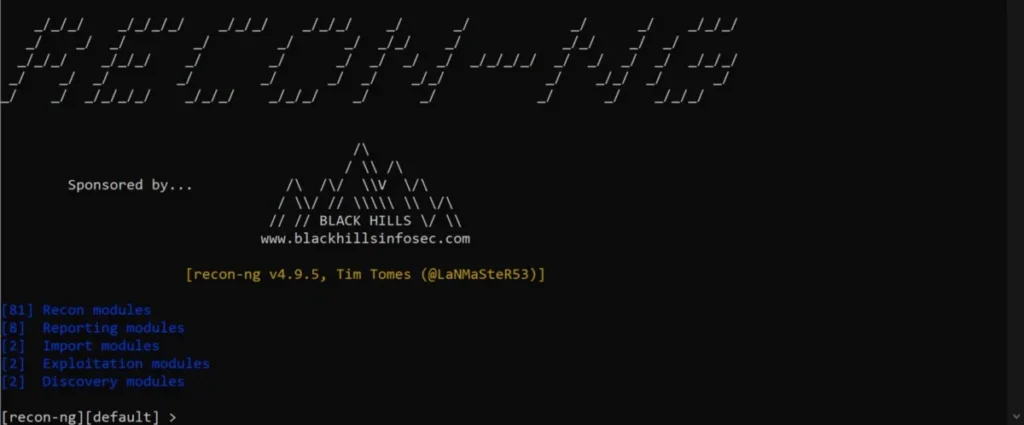how to find hidden profiles on social networks
Ever wondered how you can find someone online?
Have you been trying to find someone online, specifically perhaps by using an email addresses, or username? Open Source Research (osint) techniques are what you should really be looking for. Right? How do you track someone down online? you can :
- Use professional, free tools, like shodan, UserSearch.org, Maltego, etc.
- up-skill in coding and website frameworks.
- Hire an expert.
- Attend an OSINT course.
- Use Google (google hacking).
- Snoop around Facebook.
- Social Engineering.
- Read this article…
Concerning the term OSINT, you may be have come across the term within the darker areas of the web, along with other words that may have negative connotation (thanks media). Therefore, you may be put off reading further. However, don't be put of dear reader, this article may enlighten you.
Consequently, the same word can mean different things to different people. With regard to the term OSINT, it mean many different things. Doxxing, fullz, digital footprint, digital trail, they all have a similar meaning (accepted the end result is often quite different).

You have likely already performed OSINT without realising. Essentially, means a lot of things. OSINT is a valuable skill set for Investigators, the security department, intelligence units, risk managers, and cyber security experts. To sum up my brief introduction, in this article, you'll learn everything (well, a lot anyway), about OSINT and how to go about using it in your daily life. Most importantly, it may lay the tracks into a new and marketable skill set.
What exactly is OSINT?
OSINT is short for Open-source intelligence. Most importantly, it refers to a qualitative and quantitative approach to collecting, evaluating, interpreting, and making decisions about data from open source areas, and used for intelligence purposes.

What is this data i'm looking at? Open-source intelligence is often used to gather massive amounts of data. Indeed, is that wrong? hackers are known to do this, along with other members of society for investigative purposes. Considering the negative history of data leaks online, namely how media talks about hackers, this may cause you to think OSINT is wrong. Above all, you may be thinking your out of your league.
Do you need to be a super tech? no. Inasmuch as you don't need hacking or cracking skills, just an investigative mind and the ability to access a website. Regarding those seasoned among us, you may have gasped at the point. Specifically, what we mean is, to begin with…you can pickup basic levels of OSINT with very little technical know-how.
These public areas of information are accessible and can be found, if you know where to look. Above all, you also need to know what to ask..and what tool to use.
The sources could be news posts, magazines, specialist journalists, social or mass media, research, Google, geospatial information, other mapping tools, press conferences, public government reports, telephone directories, hearings, dissertations, patents, technical reports, financial assessments, and every other platform where people drop information.
How old is OSINT?
In the United States, history of OSINT can be dated back to 1941. Specifically, the Federal Communication Commission created the Foreign Broadcast Monitoring Service (FBMS). Most importantly, it was changed to the Foreign Broadcast Intelligence service (FBIS). As a result, it was used to monitor foreign broadcast. The agency used public information from news and media sources outside the United States to monitor and analyse information

After the September 11 attacks, in November 2005, the US National intelligence committee absorbed the FBIS under the auspices of the CIA. As a result, it merged it with other research bodies to become the new open-source center, Open Source Enterprise. Consequently, the centre was tasked with collecting information from databases, press, radio, geospatial data, video, commercial imagery, and the internet.
The site grew, largely thanks to its success. Consequently, it became the central location to train analysts in interpreting data.
Common Applications of OSINT
Intelligence
There are sites all around the country that are used to gather intelligence. Namely, the Police Bureau of Investigation, National Security Intelligence and Special Branch. That is, these bodies are used to gather information and investigate crimes / terrorist organisations, or people that pose a threats to others. With regard to the targets, they are typically people who can be very discreet, they know how to be anonymous.

Hire Workers
Organisations need people, and they need them to be skilled. Therefore, public and private organisations can and usually do, use OSINT to perform background checks on on staff prior giving them a job. Above all, this is of particular importance to them, if their positions are very sensitive. The background check validates the information provided by the workers to confirm how genuine it is. Consequently, it can include checking the past job performance of the workers, police records, academic performance.
Cyber security
As the years advance, its a common theme that Cybersecurity is becoming an increased cause for concern for most organisations. As a result, its particularly alarming when you see reports of large websites being hacked by cybercriminals and their data stolen. OSINT is used by these organisations to gather public security exposures of their websites prior them being exposed publicly or taken advantage of by criminals. Namely, this kind of task typically falls to the local IT department and it starts usually, by suspicious visits to their website.

These techniques are used by security experts to check the security network of a firm. It is used to check the network for weaknesses, bugs, and other loopholes that can be dangerous.
Indeed we refer to organisations, but its just as important these days to perform these kind of checks on your own online presence. In addition, you can benefit from damage remediation, network foot printing, and penetration testing.
Originality
For companies that focus on content, they use OSINT techniques to check the genuineness of their content. Furthermore, organisations will use open intelligence to assess students' assignments, research works, and projects for plagiarism. So, use of copyright images and contents can be tracked, and articles and written literature can be checked for plagiarism.
Manage risk and investigate fraud
Experts concerned with managing risks and investigating frauds can use OSINT to track fraudulent activities, fake products, and diverted commodities, and other internet activity. Therefore, it will minimise risk exposure and potential losses, resulting in identifying risk recovery processes.
Other common application of OSINT includes tracking cryptocurrency, due diligence, phishing, deep and dark Web. Above all, the quality of the information gathered can heavily depend on the tools you use, the source used, and the way you entered your search.
Common OSINT techniques
Always ask questions
As a beginner, the first technique to be familiar with is asking questions and asking rightly. For instance, OSINT can be viewed as operating a little like search engines. Inasmuch as If you don't ask the right question, you wont get the correct answer! (and knowing if the answer is incorrect is challenge in itself).

First, before you even type in a google search, you need out some goals, such as what is the most ideal outcome, and worst outcome. With this in mind, you should list out the questions that can help you achieve those goals, and formulate a strategy on how to achieve them.
Data collection Approach
Collecting data: to begin, there typically two core ways to do this, active or passive.
Concerning the active approach, you will be directly in contact with the target and gathering data on the go. In contrast, that can be pretty risky, why? The investigator will be potentially tracked by the target. As a result, if the target gets alerted, they will and can track and trace the investigation source.
Regarding the Passive approach, it does not link you directly with your target, making it the safest option for Investigators. Specifically, investigators can get historical data from third party sources. Indeed the data might not be 100% accurate, which can be a challenge.
OSINT tools and resources
Performing an online (or offline) data collection can be time consuming. For instance, trying to identify whether an email address has been used on 10 different dating websites, could take all day. In contrast, to do this within a reasonable time, it would be best to become familiar with OSINT tools and resources. Have a good idea on what the best tools are available, and bookmark some good how-to articles. Afterwards, they will make combing through open data sources easier. Next, with the available OSINT tools, you can simplify your method of collecting data, analysing data, attributing intelligence reports, and accessing databases.
Understand the OSINT Framework
Artefact types, whether your looking for a username, email address or phone number, requires different sets of skills and tools. Additionally, these tools can largely be seen on the popular OSINT Framework. Indeed, OSINT Framework is one of the most comprehensive collections of free and paid tools to use for gathering information. Furthermore, the site filters resources into appropriate categories based on what your looking for.
The categories include social networks, public records, videos, photos, digital currency, archives, dark web, and more.
OSINT in the open – examples of open source intelligence
Sourcing for data through Open Source Intelligence is as easy as checking your dictionary for definitions. They include;
- Asking questions about anything on any search engine.
- Research communities on how to fix your mobile phones.
- Watch a YouTube video on how to prepare any local or international meal.
- Check your friends, friends, on social media.
- Google a username.
- Google a email address.
- Use reverse search tools.
- Exif data within pictures.
How experts perform OSINT?
OSINT is a very dynamic method of collecting and analysing public data. Furthermore, there are different ways of sourcing its data. With this in mind, experts and intelligence bodies operate discreetly to be able to collect information without being identified.
They collect information anonymously by using VPNs to hide their identity. At the same time, the OSINT analyst first examines the sources of information to ensure that there are no elements that can affect the accurate interpretation of data in the future.

Social media and OSINT
Over 3.6 billion people in the world are active on social media, making it easy to access plenty of information on the different platforms. Consequently, the amount of information on social media platforms, makes it an open intelligence source.
Social networks store information on names, marriage status, email, username, birthday, education record, career, etc. Furthermore, they will hold years with of online activity, allowing them to practically plot your life.
Investigators use OSINT to trace criminals attack sources on social media. In other words, they search and use the information on the different social media platform to get important information about missing persons, criminals, or victims of hurt cases.
Is OSINT legal or ethical?
We all know this stuff is used by hackers, spies, and criminals, and the media likes to remind us, daily. Considering this, are we breaking any laws by gather information used to threaten or carry out harmful attacks on individuals and organizations, using OSINT? OSINT, used by the right people, does good.

So, it save lives, finds missing persons, catches bad guys and stops scammers with these techniques. We use it to get information that protects people, grow businesses, and zero in on criminals and terrorist organizations
The short answer is, yes.
Why should you use OSINT?
Indeed, OSINT can be beneficial to security teams and other analysts. Most importantly, whatever the good guys can do, the bad guys can do. Regulation of OSINT is important, to avoid breaching people's privacy and mishandling the information available. With this in mind, imagine the unprotected ability of finding someone online, searching for usernames and email addresses of people without oversight.
OSINT tools: An expanding list
Shodan
Shodan is a search engine use by hackers to gather information on web. Specifically, it presents information or search results in a pattern that suits security experts. Gathering security related information, network and digital assets are a great tool for evaluating information and Shodan provides with information on all devices linked to the network.

Maltego
This tool is very popular in the the OSINT security community. In addition, its good with finding / visualising data, including usernames and email addresses and social media profiles. Specifically, if you want to find someone online, this tool has a very good chance at doing it. The uniqueness of this tool is such that it converts search results to graphical representations that make analysing results easier. For instance, it can help you develop a digital identity that tracks your target. Private use is free, business use does have a charge.

Tineye
Tineye is a tool used for searching images on the web. For instance, it uses machine language, neural networks, and pattern recognition to get results on millions of images online. With the tool you can discover if an image has been uploaded anywhere online, and the exact location where it was uploaded. The tool features watermark identification, image matching, Tineye alert system, mobile engine, colour search API, and signature identification.

Harvester
This is another great tool for reporting on domain and email information. It was built in Kali for crawling and analysing websites.
Google Dorks
This tool is great for finding information in Google that perhaps, would not be indexed and searchable, had the owner of the information have a choice. Also, it lets you enter Google queries that pull this informaiton out, view and analyse.
Metagoofil
The tool Metagoofil is useful OSINT application that was developed by Christian Martorella. Its accessed via a command line interface, so you need to be familiar with cmd.
It can be used pull out metadata on documents, such as creator, old versions, old dates of modification, etc.
The command line is will let you narrow down searching to the type of document you need on local download, reporting results, or collecting of metadata from a particular domain.
Search code
The tool scans computer code for particular functions, operations, variables, or bugs in a code segment. It saves you needing to review the codebase. So, you can search based on programming languages, or by inputting your target code.
Recon-ng
Recon-ng is another excellent tool a user can use to search for information on targets. Also, its pre-bundled in Kali and uses the modules to get results. In addition, it comes with many different modules, and the modular approach allows you to get information based on your specific need. For better results, use the modules alongside the domains on the workspace.

Recorded Future
AI has been topping the game in all we do, and is not left out in OSINT. Consequently, Recorded Future is an Artificial Intelligence based tool that helps to predict trends and analyse big data; it uses structured data, AI algorithms, and unstructured data to help predict future trends. With these tool, users can get both past and present data trends for OSINT data.
UserSearch
UserSearch is a website that allows you to search for social media handles available anywhere online using usernames and emails. Thanks to using this tool, investigators have greatly increased the speed of online investigations. It saves countless hours browsing through individual social media sites and checking their profiles.
Furthermore, using a reverse lookup tool like this means your search is more targeted, and results are optimised. It will give the URL of the profile associated with the username. What does that mean? it saves you searching hundreds of social media networks to lookup usernames, manually.

You can quickly see their profile for free. These kind of search engine are known as a reverse username search or a reverse email search.
This works using web crawlers to check hundreds of sites per second, on if a user profile exists. It will check social media profiles, social networks, crypto forums, general forums, dating websites. All the local social network areas you would expect people to gather online, it essentially does this.
To tum up, the tool also offers a premium package where it provides more advanced features, for $6.99 per month, which you can cancel at any time.

Are you an expert yet?
So, there you have it. You can do a lot of things with OSINT. If you've ever asked the question, how do I search for someone online, usernames and even email addresses of people, while thinking to yourself it may be too much trouble…now you know. After all of that, you now have OSINT skill sets.
Open-source intelligence is a resource tool to harness in achieving a lot. If you are new to the security field, the information provided in this guide is one of the primary resources you need to get your career going.
Interested in learning more? Check out these related articles:
- Are you talking to a catfish?
- How to Find Someone's Social Media Accounts by Email Address or Username?
- How to Find & Search for Someone on Tinder
- Why check your username and brand before doing business?
- How to find someone by email address in 5 steps?
- How to find someone on social networks by username?
how to find hidden profiles on social networks
Source: https://usersearch.org/updates/2021/11/04/osint-find-information-on-anyone/
Posted by: edlerantiquim.blogspot.com

0 Response to "how to find hidden profiles on social networks"
Post a Comment